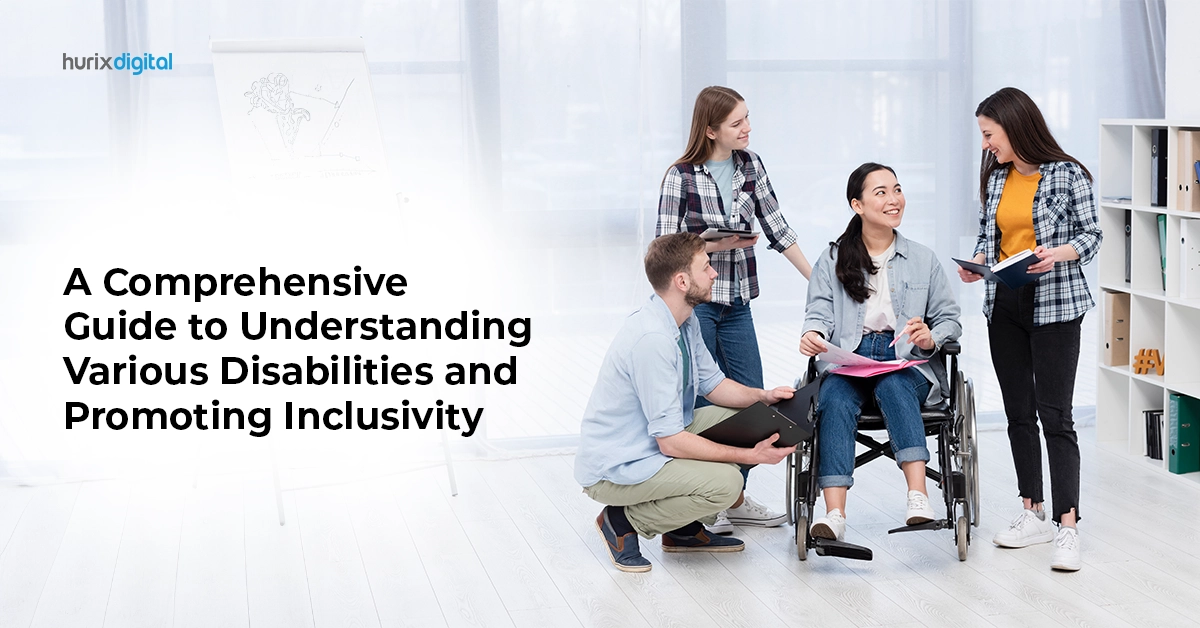Summary
By enabling people with disabilities to be more independent, communicate more effectively, and access digital and physical environments more easily, assistive technology can help to improve their quality of life and enhance their overall well-being.
During my usual grocery shopping, I noticed a person in a wheelchair was struggling to enter a nearby shop, It's like a bolt of lightning strikes you - how many daily challenges do individuals with disabilities face that we take for granted?
Most of us never thought about the daily struggles that individuals with disabilities face.
Table of Contents:
- Introduction
- Types of Assistive Technology
- How Assistive Technology is Useful for Disabled People?
- Conclusion
Introduction
It’s easy to take for granted the simple tasks that we perform without a second thought.
But what if those tasks were extremely challenging? That’s the current situation for many people with disabilities.
But there are technologies available to make things easier. With assistive technology, empowering lives and turning impossible things into possible.
Assistive technology (AT) is a term used to describe devices, software, and other technologies that are designed to assist people with disabilities in their daily lives. AT can help people with physical, cognitive, or sensory impairments to perform tasks that they might not be able to do otherwise. In this blog, we will explore what assistive technology is, and how it can be useful for disabled people.
Types of Assistive Technology
Assistive technology for disabilities can take many forms, from simple devices like canes and hearing aids to more complex software and hardware systems. Here are some examples of different types of assistive technology:
1. Mobility aids: Mobility disability aids like wheelchairs, scooters, and walkers can help people with mobility impairments to move around more easily and independently.
Examples: Wheelchairs, Walkers, Canes, Prosthetic limbs, Power lift chairs, Environmental control systems, Adaptive switches, Voice-activated assistants, Specialized keyboards and mice, Specialized software for typing and navigation.
2. Communication aids: Communication aids like speech-generating devices, text-to-speech software, and alternative and augmentative communication devices can help people with speech or language impairments for improved communication.
Examples: Speech-generating devices, Text-to-speech software, Augmentative and alternative communication devices (AAC)
3. Hearing aids: Hearing aids are small electronic devices that amplify sound, making it easier for people with hearing impairments to hear and understand speech and other sounds.
Examples: Hearing aids, Cochlear implants, Assistive devices for listening, Amplified phones, Captioning devices
4. Vision aids: Vision aids like magnifying glasses, screen readers, and Braille displays can help people with visual impairments to read and navigate digital and physical environments more easily.
Examples: Magnifying glasses, Screen readers, Braille displays, Voiceover software, Electronic magnifiers
5. Environmental control systems: Environmental control systems like smart home technologies and voice-activated assistants can help people with mobility impairments control their environment, such as adjusting the temperature or turning on the lights.
How Assistive Technology is Useful for Disabled People?
Assistive technology can be incredibly useful for disabled people, as it can help them perform tasks that they might not be able to do otherwise. Here are some ways in which assistive technology can be helpful for people with disabilities:
- Improving independence: Assistive technology can help people with disabilities to be more independent by enabling them to perform tasks that they might otherwise need assistance with.
- Enhancing communication: Communication aids can help people with speech or language impairments to communicate more effectively with others, which can improve their social interactions and relationships.
- Increasing access: Assistive technology can help people with disabilities to access digital and physical environments that might otherwise be inaccessible to them, such as websites or buildings that are not wheelchair accessible.
- Enhancing safety: Assistive technology can help people with disabilities stay safe by reducing the risk of accidents and injuries, such as by providing warning signals or fall detection systems.
- Improving quality of life: Assistive technology can help people with disabilities improve their quality of life by enabling them to participate more fully in social, recreational, and vocational activities.
Conclusion:
Assistive technology is an essential tool for many people with disabilities, as it can help them perform tasks that might otherwise be challenging or impossible. By enabling people with disabilities to be more independent, communicate more effectively, and access digital and physical environments more easily, assistive technology can help to improve their quality of life and enhance their overall well-being. As technology continues to advance, it is essential that we continue to develop and expand assistive technology to ensure that everyone has the opportunity to live their lives to the fullest.
At Hurix, we are completely aware of how assistive technology can significantly improve the lives of people facing various challenges. That’s the reason we are fully committed to ensuring that all our products are accessible and user-friendly for those who rely on assistive technology.
That’s the reason we are fully committed to ensuring that all our products are accessible and user-friendly for those who rely on assistive technology.
We believe that assistive technologies are the support system should connects people, not a barrier that separates them.
Get in touch with Hurix Digital, an organization that understands the importance of Assistive technology, and committed to ensuring that all your digital products are compatible with Assistive technologies.







